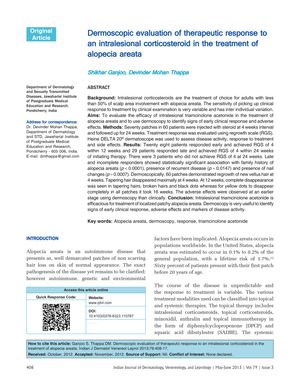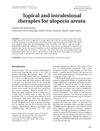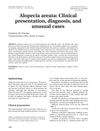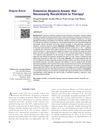Dermoscopic evaluation of therapeutic response to an intralesional corticosteroid in the treatment of alopecia areata
January 2013
in “Indian Journal of Dermatology, Venereology and Leprology”

TLDR Intralesional triamcinolone acetonide is effective for treating patchy hair loss, and dermoscopy helps detect treatment response and side effects early.
In a study conducted at a tertiary care hospital in South India from May 2011 to June 2012, 60 patients with alopecia areata were treated with intralesional triamcinolone acetonide injections and monitored for 24 weeks using dermoscopy. The study found that 28 patients showed an early response, achieving a Regrowth Scale (RGS) of 4 within 12 weeks, while 29 patients were late responders, achieving RGS of 4 within 24 weeks, and 3 patients did not achieve RGS of 4 at all. Early responders typically had a shorter duration of alopecia areata patches and smaller patch size, while late and incomplete responders often had a family history of the condition, recurrent disease, and nail changes. Dermoscopic evaluation was more sensitive than clinical examination in detecting early response to treatment and adverse effects, such as atrophy and telangiectasia, which were observed in 16% of patches. The study concluded that intralesional triamcinolone acetonide is effective for treating localized patchy alopecia areata and that dermoscopy is a useful tool for early detection of clinical response and adverse effects.
View this study on ijdvl.com →
Related
research Dermoscopic evaluation of therapeutic response to intralesional triamcinolone acetonide in the treatment of Alopecia areata

research Topical and intralesional therapies for alopecia areata
No treatments fully cure or prevent alopecia areata; some help but have side effects or need more research.

research Alopecia areata: Clinical presentation, diagnosis, and unusual cases
Alopecia areata is a type of hair loss that can lead to complete baldness, often associated with other autoimmune conditions, and half of the cases may see hair return within a year.

research Extensive alopecia areata: Not necessarily recalcitrant to therapy!
Some people with severe, long-lasting baldness responded well to a specific combination treatment.